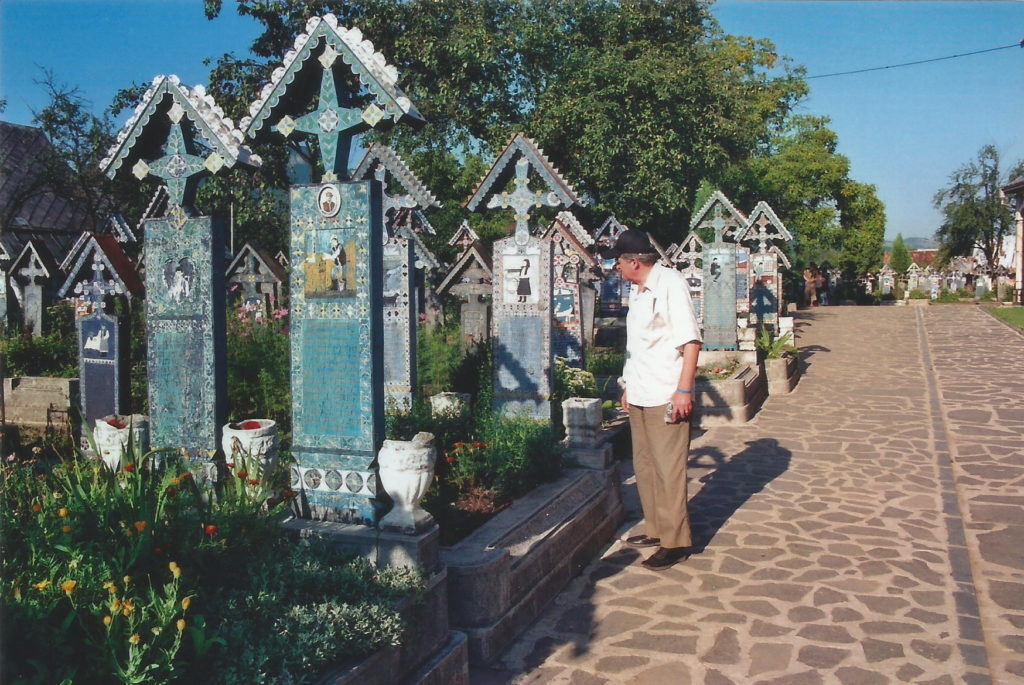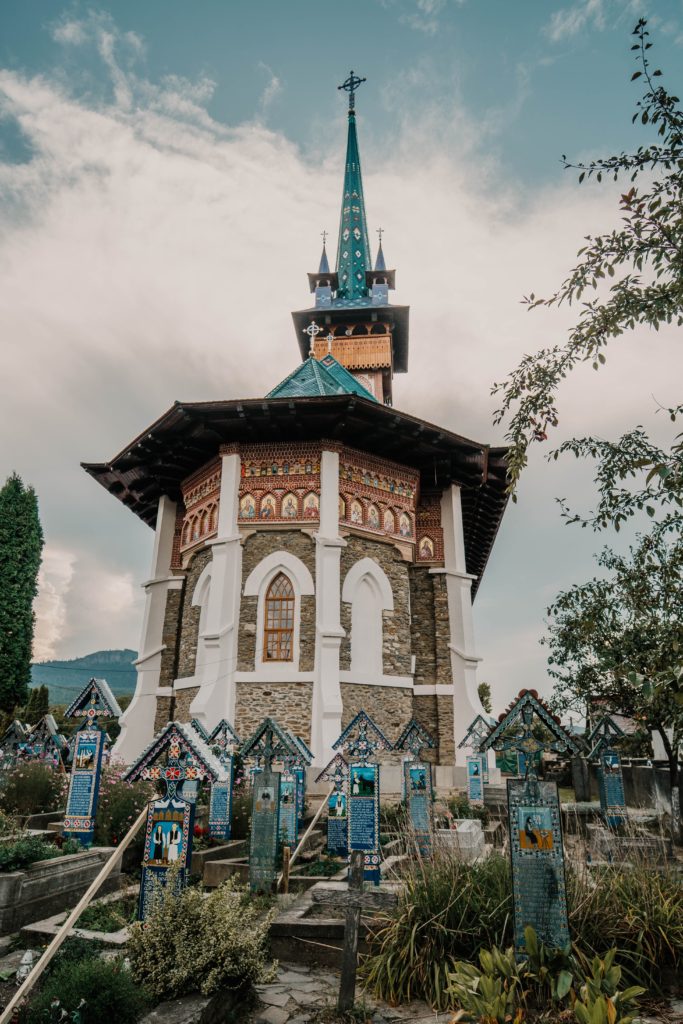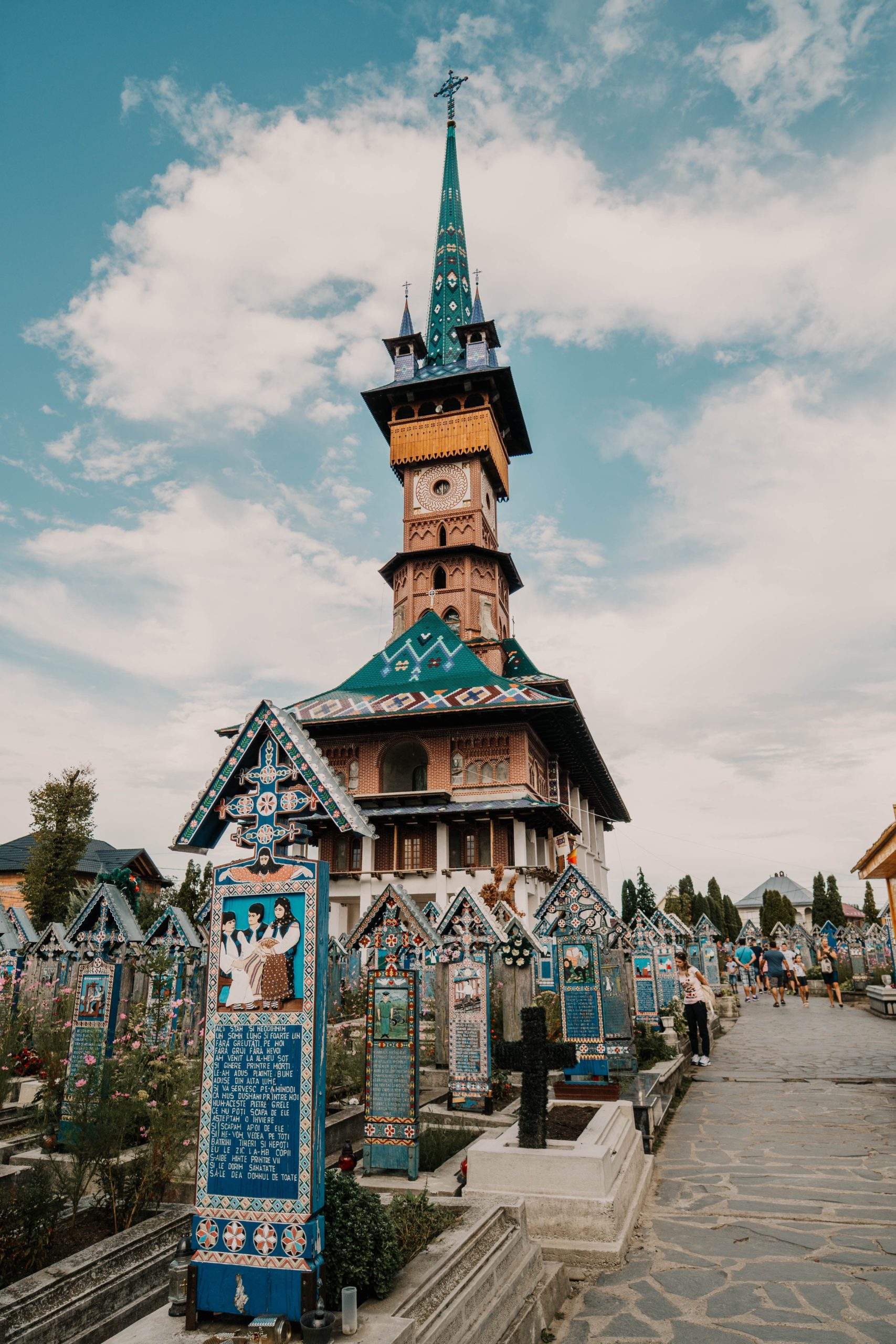The Merry Cemetery: A Unique Resting Place
Written and photographed by Melline Galani.
Many people think of cemeteries as gloomy places of mourning, and I agree with them, especially since I used to often go to places like those back home. But, in the small village of Săpânța in northern Romania (Maramureș County), there is a quite unusual cemetery. Rather than a colorless, sad
site, this cemetery seems bright and lively, as most of the burial places are decorated with naïve paintings describing, in an original and poetic manner, the people laid to rest there as well as scenes from their lives.
Legend has it that the cheerful attitude toward death is a custom of the Dacians (Romanians’ ancestors), who believed in eternal life – for them, death was just the transition to another world. They did not see death as
a tragic end but as a chance to meet the supreme god Zamolxe (or as a passing to a better life). Therefore, celebrating the lives of the deceased is part of the Romanian tradition, hence the original idea of creating something as unique and colorful as the Merry Cemetery.

Stan Ioan Pătraş (a Săpânța villager) founded the Merry Cemetery (Cimitirul Vesel in Romanian) in the 1930s. He began creating colorful, cross shaped tombstones and writing epitaphs in 1935 for the village people who had passed away. Now, the cemetery contains over 800 similar grave markers.
Each tombstone is painted with a signature blue-colored base, and then detailed with brightly colored lines and patterns. The epitaphs are silly, but the meaningful lyrical poems describe something significant about
the people’s lives. The poems are not irreverent and do not mock the grave or its tenant, but some of them do seem somehow indiscreet, telling witty stories of infidelities, indiscretions, and a fondness for alcohol.

Here is an English translation of the Romanian inscription on one:
Under this heavy cross
Lies my poor mother-in-law
Three more days should she have lived
I would lie, and she would read (this cross).
You, who here are passing by
Not to wake her up please try
For if she comes back home
She’ll bite my head off
But I will surely behave
So, she’ll not return from the grave.
Stay here, my dear mother-in-law!
Pătraş died in 1977, having carved his own cross and left his house and business to his most talented apprentice, Dumitru Pop. Pop has since spent the last three decades continuing the work and has also turned the house into the Merry Cemetery’s workshop-museum. The wood used to carve the crosses is exclusively oak. After cutting, it is processed and left to dry for 4–5 years. After the oak wood takes the form of the cross, the color known as Săpânța blue is applied, and later the elements of decoration, rhymes, scenes from the deceased’s life, and the reasons for death are added. Other predominant colors are red, yellow, green, and black – colors that perfectly integrate into the symbolism of Maramureș: red for passion; yellow for fertility; green for life; black for death. All the work is done exclusively by hand. A cross could cost $400 – $600, depending on the complexity of the work.

This place reflects one of Romania’s greatest sayings, a face haz de necaz (to make fun of a painful situation), which in translation loses its rhyme and true meaning. The main idea is that if we lose someone close, we comfort
ourselves by remembering the good or funny things about the deceased. We try to cherish their memory by celebrating the lives they had lived.
Maramureș, the county in which Săpânța village is located, is almost by definition a genuine sanctuary of Romanian spirituality. In this region, the fables, fairy tales, and traditional stories told by the fireplace become
reality. I would argue that this area is the most traditional part of Romania, where even today, all the old customs and traditional beliefs are still held dear.
Now a popular tourist attraction, the Merry Cemetery serves as a beautiful way to keep the village of Săpânța alive, transforming it into a notable tourist attraction. Cherished memories of the past are celebrated in this
cemetery, providing a link between this world and the next. It feels odd to call a cemetery “merry,” but this one really is.

The last time I visited the Merry Cemetery was seven years ago, together with my children, and it is among my favorite places in Romania. I do not think there have been many changes since then, especially in terms of
its uniqueness. Even though the epitaphs are written in Romanian, there are also pictures accompanying them, so one might get an idea of the deceased’s life. Being already an important tourist point, the Merry Cemetery has a visitation schedule (10 a.m. to 6 p.m. daily) and a
modest entrance fee of about $2.
For more information in English, please access this website: http://en.sapantamaramures.ro/about/.
THE AUTHOR
Melline Galani is a Romanian enthusiast, born and raised in the capital city of Bucharest, who is currently living in Gwangju. She likes new challenges, learning interesting things, and is incurably optimistic.




